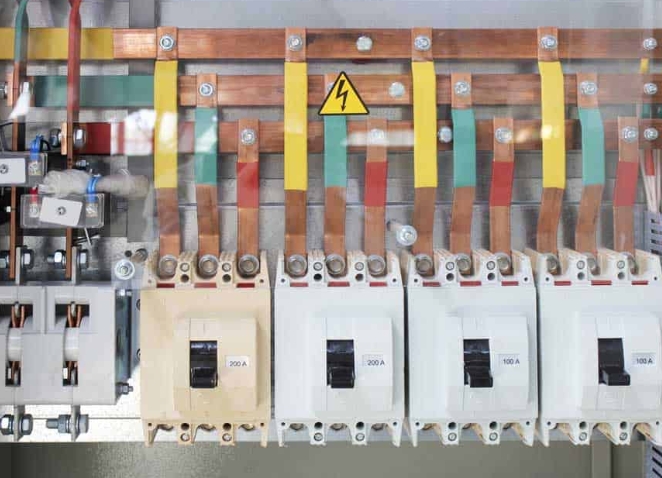
Switchgear and panelboards are two essential components in electrical distribution systems. While they both play crucial roles in controlling and distributing electrical power, they have distinct differences in terms of functionality, design, and applications. In this article, we will delve into the details of switchgear and panelboards, exploring their unique features and highlighting their respective applications.
Switchgear:
Switchgear refers to a collection of electrical devices used to control, protect, and isolate electrical equipment. It is typically installed in power substations, industrial facilities, and commercial buildings. Switchgear is designed to handle high voltages and currents, making it suitable for applications where power distribution and protection are critical.
Key Features of Switchgear:
- High Voltage Handling: Switchgear is capable of handling high voltage levels, typically above 1000 volts.
- Circuit Protection: It incorporates protective devices such as circuit breakers and fuses to safeguard electrical equipment from overloads, short circuits, and faults.
- Isolation Capability: Switchgear allows for the isolation of electrical equipment for maintenance or repair purposes, ensuring the safety of personnel working on the system.
- Modularity: Switchgear is often modular in design, allowing for easy expansion, modification, and replacement of individual components.
- Remote Monitoring and Control: Advanced switchgear systems can be equipped with remote monitoring and control capabilities, enabling operators to monitor and manage the system from a centralized location.
Applications of Switchgear:
- Power Substations: Switchgear is extensively used in power substations to control and distribute electricity from the transmission grid to various distribution networks.
- Industrial Facilities: Switchgear is employed in industrial settings to protect critical equipment, such as motors, generators, and transformers, from electrical faults.
- Commercial Buildings: Switchgear is installed in commercial buildings to ensure reliable power distribution and protect electrical systems from potential hazards.
Panelboard:
Panelboards, also known as distribution boards or breaker panels, are electrical enclosures that house circuit breakers, fuses, and other protective devices. They are responsible for distributing electrical power to various circuits within a building or facility. Panelboards are commonly found in residential, commercial, and small-scale industrial applications.
Key Features of Panelboards:
- Circuit Distribution: Panelboards distribute electrical power to individual circuits, allowing for control and protection of specific areas or equipment.
- Load Management: They provide a means to manage and balance electrical loads across different circuits, preventing overloading and ensuring efficient power distribution.
- Compact Design: Panelboards are typically compact and space-saving, making them suitable for installations where space is limited.
- Ease of Installation: They are designed for easy installation and wiring, allowing for quick and efficient setup.
- Cost-Effective: Panelboards are generally more cost-effective compared to switchgear, making them a popular choice for residential and small-scale commercial applications.
Applications of Panelboards:
- Residential Buildings: Panelboards are commonly used in homes to distribute power to various circuits, including lighting, appliances, and outlets.
- Commercial Buildings: They are installed in commercial establishments to distribute power to different areas, such as offices, retail spaces, and common areas.
- Small-Scale Industrial Applications: Panelboards are suitable for small-scale industrial settings where power distribution needs are relatively simple and straightforward.
In conclusion, switchgear and panelboards are essential components in electrical distribution systems, each with its own unique features and applications. Switchgear is designed for high voltage handling, circuit protection, and isolation, making it ideal for power substations and industrial facilities. On the other hand, panelboards are compact, cost-effective, and suitable for residential and small-scale commercial applications. Understanding the differences between switchgear and panelboards is crucial for selecting the right solution for specific electrical distribution needs.



